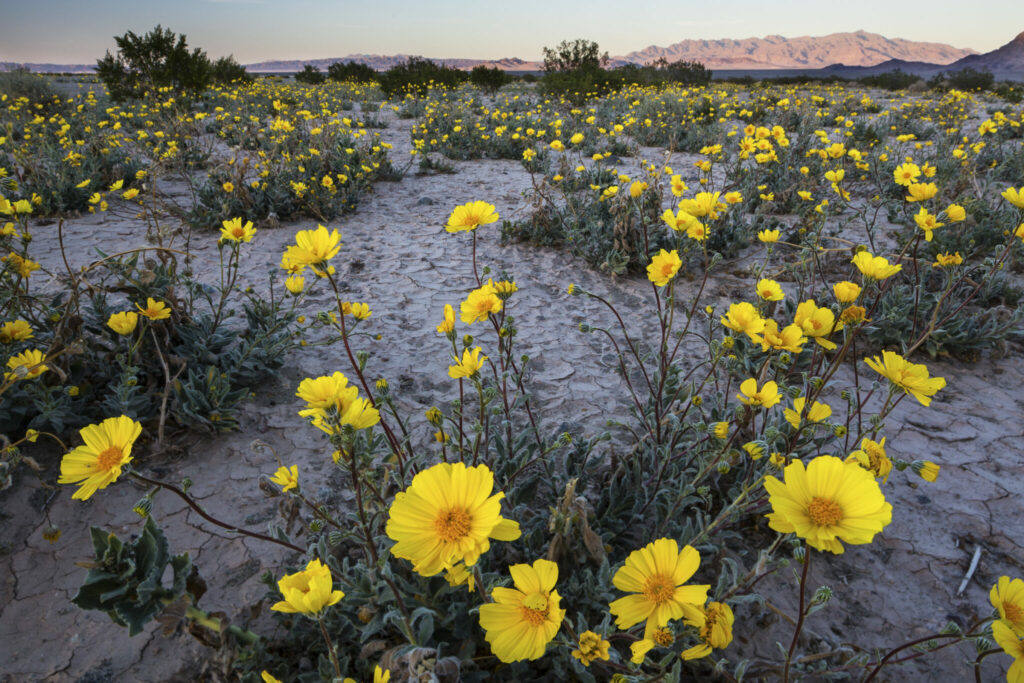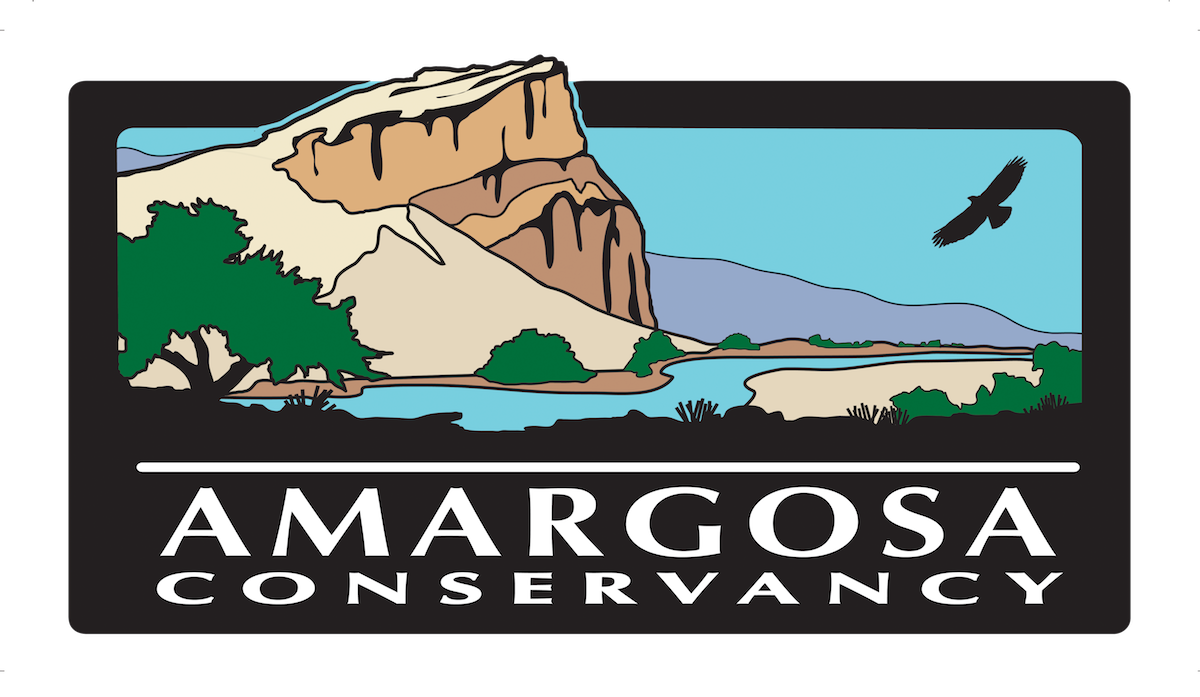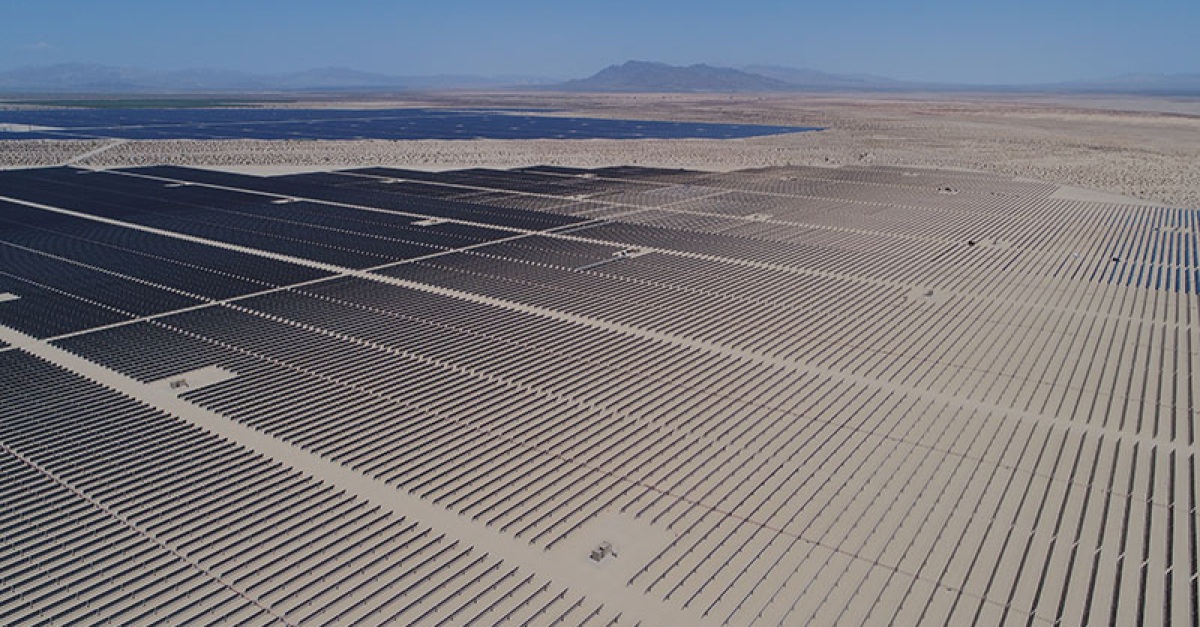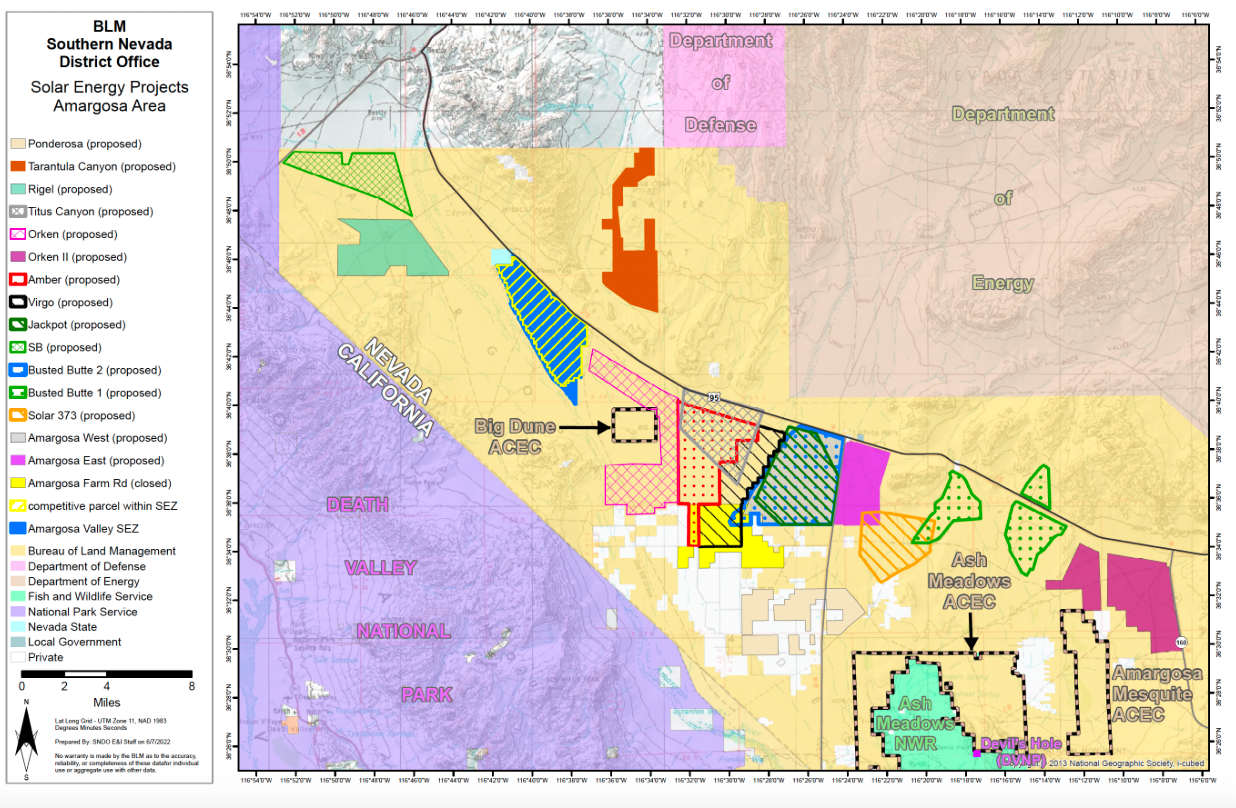Caption: Palen Solar Project in Riverside, CA; determined as suitable under the DRECP
by Chris Clarke Amargosa Conservancy Board Member Ruth Hammett Associate Director, California Desert Program National Parks Conservation Association
In December 2022, the Us Department of the Interior announced it would consider reopening a document called the Final Programmatic Environmental Impact Statement for Solar Energy Development in Six Southwestern States, thankfully also known as the Solar PEIS. Completed by Interior and the Department of Energy in 2012, the Solar PEIS was essentially an attempt at zoning BLM lands in those six states — California, Nevada, Utah, Arizona, Colorado, and New Mexico — to determine which lands were appropriate for utility scale solar development, and which were not.
That PEIS set aside 285,000 acres in those states to prioritize for solar development in so-called Solar Energy Zones, or SEZs, pronounced “sezzes.” (To give you a sense of scale, 285,000 acres is about 94% of the land area of the city of Los Angeles.) Another 19 million acres and change became so-called “variance lands,” where solar development would be generally allowed but not fast-tracked. Something like 80 million acres of BLM lands were designated as “exclusion areas,” which for reasons of resource protection, topography, tribal interest, wildlife value, or other factors were deemed unsuitable for large-scale solar development.
In opening up the Solar PEIS for review and potential amendment, the Interior Department is proposing to extend the BLM solar program to Washington, Oregon, Wyoming, Idaho, and Montana. As solar power becomes less expensive, large-scale installations in those less sunny states have been making more economic sense.
The ramifications of the new Solar PEIS for the Amargosa Basin aren’t certain. In late February, Californian Desert activists breathed a sigh of relief as the BLM announced it had decided to leave California’s Desert Renewable Energy Conservation Plan (DRECP) off the table for revision in the new PEIS. The DRECP, established in 2016, built on the first Solar PEIS but on a finer-grained level, designating smaller Development Focus Areas within those parts of the California Desert opened up to solar in the PEIS, and establishing about six million acres of conservation lands off-limits to development. Most of the California side of the Amargosa Basin outside of designated wilderness or Death Valley National Park is protected as some of those conservation lands. Since the DRECP will stay intact, almost all the lands along the Amargosa in California will remain protected from inappropriate solar development for the time being.

Silurian Valley, designated California Desert National Conservation Lands under the DRECP: photo by Bob Wick
Nevada is a different story. The 2012 Solar PEIS established a SEZ in Amargosa Valley of 8,479 acres, with the next closest SEZ at Gold Point, 44 miles north of Beatty. The remainder of the BLM lands in the Amargosa Basin in Nevada are a confusing mix of variance and exclusion lands. Industry interest in either the Amargosa Valley or Gold Point SEZs has been lukewarm at best. Meanwhile, variance lands near Pahrump have been heavily targeted for development, and solar proposals are thick on the ground near Beatty.
Clearly, solar developers aren’t taking to the concept of SEZs, at least in this part of Nevada. Among other things, industry has been pressuring the BLM to reconsider its criteria for exclusion lands. In particular, the original PEIS excluded lands from development that had a slope of more than five percent. That was a holdover from the days when most solar proposals involved solar thermal technology. Photovoltaic installations can readily be installed on slopes of up to 15 percent, and the BLM is considering changing its rules along those lines. Loosening requirements for proximity of transmission is another possibility, as is reducing the required amount of “insolation,” or the intensity of sunlight hitting a particular site. (That’s another consideration being advanced as a result of the differences between photovoltaics and solar thermal power generation.)
In short, it’s entirely possible that a revised Solar PEIS could mean much more widespread designation of Solar Energy Zones in Western Nevada, including the Amargosa Basin. This is especially true given the looming construction of the Greenlink West power line.
Our society does need to figure out how best to develop our solar generating capacity, and in theory, the Solar PEIS process offers an opportunity to get things right. However, if the Solar PEIS goes wrong, it could set in motion landscape-level changes of a kind unseen in many generations. We at the Amargosa Conservancy will be watching the process closely. Stay tuned for potential action alerts and other opportunities to make your opinions known.


